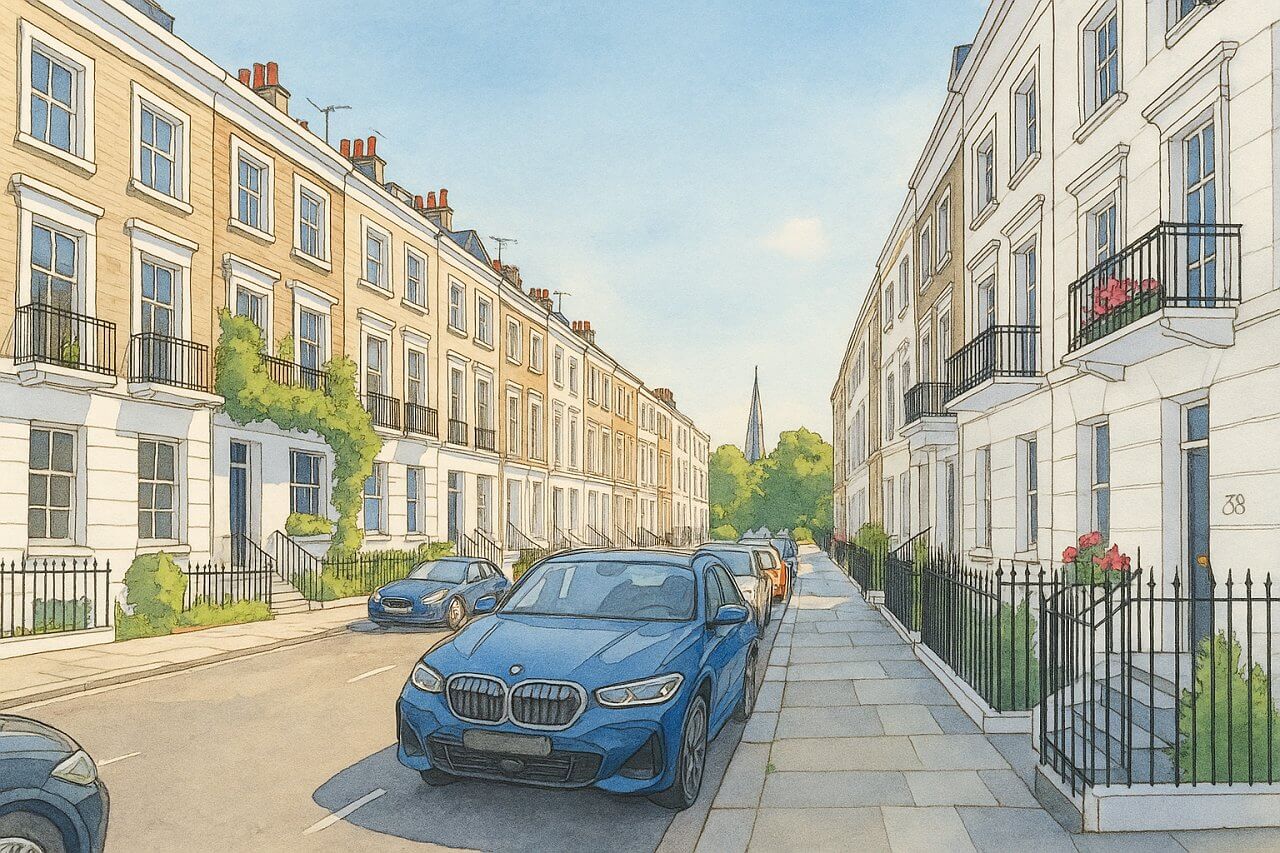
Cambridge Street, London
Cambridge Street is a charming residential road in the City of Westminster, connecting Hugh Street in Victoria to Lupus Street in Pimlico. Nestled within a quiet yet central part of London, it’s a street steeped in history and architectural character, with convenient transport links and an enviable location.
Where is Cambridge Street?
Cambridge Street lies within SW1V in the southern portion of the City of Westminster. It runs in a mostly straight line from Hugh Street to Lupus Street, passing through a peaceful, residential part of Victoria and Pimlico. The street forms part of a distinctive grid layout found in this area of Westminster, just a short walk southwest of Victoria Station and east of Warwick Way.
Length and Layout
Cambridge Street is approximately 0.3 miles long (0.48 km). While relatively short, its layout is orderly and elegant, lined by classic terraced houses and some modernised conversions. The road is predominantly one-way, adding to the tranquil, residential feel despite its central London location.
History of Cambridge Street
The street was laid out during the mid-19th century, as part of the grand development of Pimlico by the influential landowner Thomas Cubitt. Cubitt was responsible for designing much of Belgravia and Pimlico, and Cambridge Street shares the signature characteristics of his other projects—clean lines, stucco-fronted terraces, and harmonious proportions.
The development was part of Cubitt’s vision to transform the marshy land of Pimlico into an elegant residential district catering to middle-class professionals and civil servants. The first homes on Cambridge Street appeared in the 1850s.
How Did Cambridge Street Get Its Name?
Cambridge Street is believed to have been named in honour of the Duke of Cambridge, a royal title held by members of the British royal family. During the 19th century, naming streets after royal titles and prominent figures was common, reflecting loyalty to the Crown and imbuing the area with a sense of prestige.
Streets connected to Cambridge Street
- Charlwood Street
- Clarendon Street
- Gloucester Street
- Hugh Street
- Sussex Street
- Warwick Square
- Warwick Way
Character and Atmosphere
The road retains a quiet, residential charm, with many of its original Victorian terraced houses still standing. Some have been converted into flats, while others remain as single-family homes. The atmosphere is distinctly upmarket but without pretension. Mature trees line the pavements, and residents enjoy the calm of living in a well-kept pocket of Westminster.
Cambridge Street is popular among professionals, young families, and international buyers looking for a central London location with a more neighbourly, village-like feel. Its charm lies in the balance it strikes between elegant architecture and urban convenience.
Points of Interest Nearby
While Cambridge Street itself is mainly residential, it is well-placed for a number of local sights and attractions, including:
- Tachbrook Street Market – A local weekday street market with food stalls and fresh produce, just a few minutes away.
- Pimlico Gardens – A peaceful riverside garden park at the south end of Pimlico.
- The Tate Britain – One of London’s most important art galleries, just a 10-minute walk west.
- Eccleston Yards – A creative and wellness hub behind Victoria Station, home to boutiques, cafés, and yoga studios.
- Warwick Way and Wilton Road – Nearby streets with a selection of local pubs, restaurants, and amenities.
Real Estate and Property Prices
As of May 2025, properties on Cambridge Street command premium prices, reflecting its prime location. Typical values include:
- 1-bedroom flats: around £750,000 for ~550 sq ft (51 sq m)
- 2-bedroom flats: £1.2 million for ~900 sq ft (84 sq m)
- 4-bedroom terraced houses: £2.5 to £3.2 million for ~2,000–2,500 sq ft (186–232 sq m)
These prices are above the average for London as a whole but are competitive within the SW1 postcode, especially compared to nearby Belgravia or Chelsea. The blend of history, architecture, and centrality gives Cambridge Street enduring appeal among both investors and residents.
Transport Connections
Nearest London Underground Stations
- Victoria Station (Victoria, District, and Circle lines) – around 7 minutes’ walk.
- Pimlico Station (Victoria line) – approximately 6 minutes’ walk.
Nearby Bus Stops
- Cambridge Street / Lupus Street – Served by routes 24, 360, and C10.
- Warwick Way / Wilton Road – Served by numerous routes including 2, 36, 185, 507, and N136.
These excellent connections make the area ideal for those who work in central London, as well as visitors keen to explore the city.
Fun Fact
Sir Winston Churchill once lived nearby, at 33 Eccleston Square—just one block west of Cambridge Street. Churchill's time in the area adds a touch of historic prestige. Moreover, several houses on Cambridge Street have blue plaques or historic listings due to their architectural significance.
Quick Facts
- Location: City of Westminster, between Hugh Street and Lupus Street
- Postcode: SW1V
- Length: Approx. 0.3 miles (0.48 km)
- Built: 1850s, as part of Pimlico development by Thomas Cubitt
- Name origin: Likely named after the Duke of Cambridge
- Character: Quiet, residential, elegant Victorian terraces
- Nearby sights: Tate Britain, Tachbrook Street Market, Pimlico Gardens
- Property prices (2025): Flats from £750k; houses from £2.5 million
- Underground: Victoria (District, Circle, Victoria); Pimlico (Victoria)
- Bus routes: 24, 360, C10, 2, 36, 185, 507, N136
- Fun fact: Churchill lived one block away on Eccleston Square
Map of Cambridge Street, London

Painting of Cambridge Street, London (View image in full size)